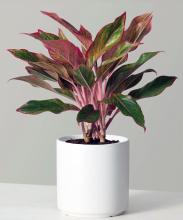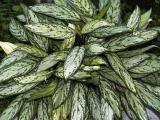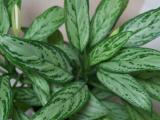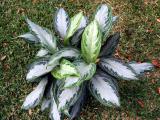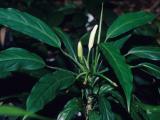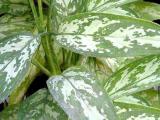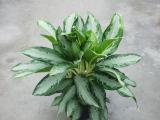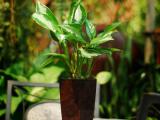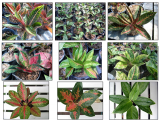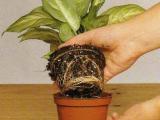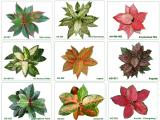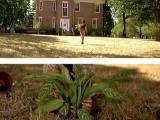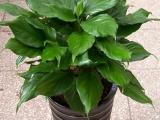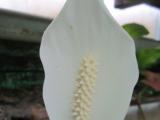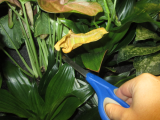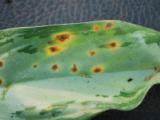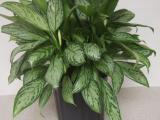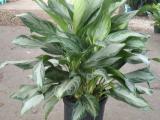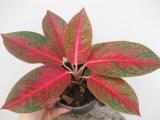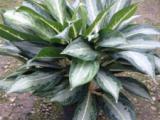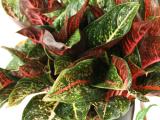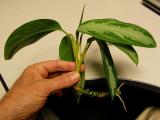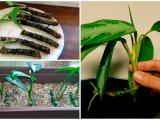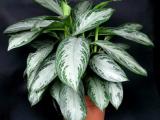If you come across a plant with unbranched, at first erect, then decumbent stamen and oval or oblong-lanceolate dark green leaves with silvery-white spots , you can be sure that...
-
Click here to see all articles about Aglaonema
Aglaonema Plant Care and Growing Guide of the Most Popular Houseplant
Aglaonema or Chinese evergreen is an extremely popular house plant, which is very easy to grow. I have a few types of aglaonema at home and plan to plant a few more. As there are about 21 species of beautiful aglaonema plant, there is always a wide scope to choose from. You can easily view pictures of the plant I am going to tell you about and choose the one you would like to have in your apartment or house.
Though aglaonema plants are mainly found in the Philippines and Malaysia, they have accommodated to our climate and temperature changes. Caring for aglaonema in a proper way you will have beautiful plants that will definitely amaze everyone around.
✔ We Released The Aglaonema HandBook
CLICK HERE TO LEARN MORE >>

Most Popular Aglaonema Plants
I’d like to begin with the definition of what aglaonema is. This is a perennial evergreen plant that can survive in poorly lighted or badly ventilated areas. The variety of its species makes it possible to choose the plants one likes the most, relying on aglaonema images.
These plants have large glossy oval-shaped leaves and small flowers, the colors of which change from white to greenish white or even red.
Aglaonema commutatum is one of the commonest species that are available to be grown as houseplants. In fact, I have one at home as well. However, I prefer Aglaonema pictum and Aglaonema crispum that are hybrids with ornate leaf patterns and colors. You can also consider Silver King and Silver Queen, Malay Beauty and Emerald Bay as great aglaonema species for home decoration.
Perhaps one of the greatest benefits of aglaonema plants is the fact that it can be planted in pots and places outdoors to give a tropical look to your garden in summer and decorate your indoor space in winter.
A few words about some of the cultivars.
Spectacular Red Aglaonema: Contributing a Zen Feeling To Your Environment
Red aglaonema is a spectacular houseplant with the stunning red-tinted leaves. This stylish species will not only ornament windowsills or desks, it will also be beneficial for a person’s health.
This aglaonema species should be kept at the temperature of about +15°C in winter and not more than +24°C in summer. In hot and sunny weather provide your aglaonema with abundant watering. The species loves fresh air and indirect sunlight. In these conditions red aglaonema is able to show the best colour. It can handle direct sun as well but to be on a safe side try to use a curtain to diffuse strong sunlight.
Use fertilizers for your aglaonema a couple of times every year. Any houseplant fertilizer is suitable. Make sure to follow the instructions on the packaging of the product.
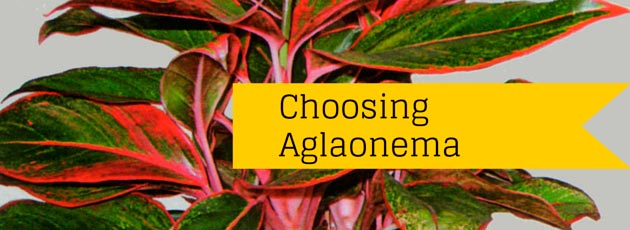
Choosing Aglaonema Commutatum You Will Be Proud Of
Aglaonema commutatum is an evergreen perennial with quite thick, lance-shaped dark green foliage and silver-white spots on the stems. It resembles dieffenbachia which is also called dumb cane.
There exist more than 20 forms of aglaonema commutatum. The leaves of each form differ in shape and colour:
Let’s take "Pseudobracteatum" for instance. The stalks of this aglaonema variety are white and elongated. There are white and sometimes pale yellow spots on the leaves;
"Malay Beauty" aglaonema variety has yellow-green foliage with white spots;
"Treubi" plant is characterized by a pattern of silver-black spots;
"Silver King" and "Silver Queen" aglaonema species have silvery-gray leaves.
This species is considered to be a no-fuss one. The care requirements are similar to those of red aglaonema.
All You Need to Know About Aglaonema Silver Bay
Silver Bay is a pompous, large, robust houseplant. It has silverlike foliage that forms a beautiful contrast with the darker green margins of the leaves.
This houseplant will grow perfectly well in almost any location. Simply remember to keep this aglaonema type away from full sun as it may scorch the exposed foliage. Aglaonema silver bay will be able to survive in case the light is low but it is likely to become thin and leggy. If you want your plant to look nice, try to provide it with bright, diffused natural light. Artificial fluorescent light will go too.
What concerns temperatures, keep in mind that this species is not a cold tolerant one.
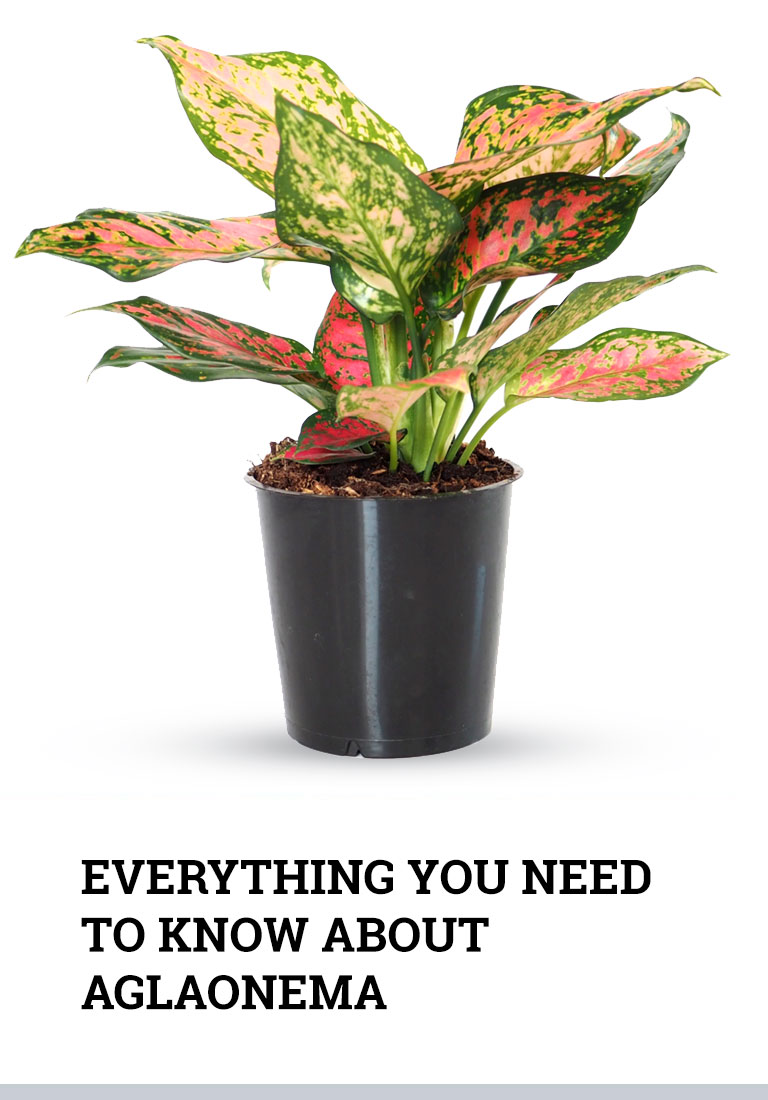
Beginner’s Guide on Growing Aglaonema Crispum
Aglaonema Crispum is also quite an undemanding plant, as well as other kinds of the genus. Like most Chinese Evergreen cultivars it grows in the bottom layer of the rainforest and along the banks of rivers and small lakes.
Aglaonema Crispum is considered to be a shade tolerant plant with glossy dark green leaves with silver edges. The leaves of the species are oval and the trunk is erect. The plant is often grown in offices due to its unpretentiousness (this cultivar requires minimal care) and beautiful ornamental leaves. This aglaonema type requires minimum care.
Aglaonema Seeds for Propagation Purposes
Aglaonema seeds can be used to propagate the species. When the fruit becomes red, it means it is ripe and must be harvested. Keep aglaonema seeds in sphagnum moss at a depth of 0.5 inch at a temperature 70-80F (+21°C +26°C). If the temperature is lower, the germination percentage is lower as well and takes longer.
As a rule, the process of germination takes up to 3 months, however, if the seeds are fresh, they can germinate within 2-3 weeks. This sort of aglaonema propagation is very popular, though many people prefer cutting.

Cutting Aglaonema as Another Way of Propagation
One of my friends propagates aglaonema plants by stem cutting or division. How to prune an aglaonema? Watch for new growth coming up at the base of the plant. Remove it from the base and replant in a separate pot. Don’t start pruning the plant beyond dying or removed dead leaves. In this case growth will emerge from the crown and you won’t manage to prune it without killing your favorite plant.
Planting and Repotting Aglaonema Plant
Once I was told how to do this quickly and achieved the best result:
- chop the stem’s top that has gotten leggy and root the stem in the soil or water
- as too much soil can encourage rot, take a 2:1 mix of perlite to potting mix, though straight perlite is rather difficult to work with
- transfer the root to a regular pot.
When to transplant aglaonema? Transplanting should take place once every 2-3 years, because these plants grow very slowly. When there is the need to remove aglaonema into a larger pot, the season doesn’t matter.
Aglaonema Plant Care Guide
Though growing aglaonema does not require special efforts, still there are some recommendations everyone should keep to.
When I bought aglaonema for the first time, I didn’t take care of it, and it soon died. Frankly speaking, I thought that I was misled, because my friend assured me that such plants never require much care. However, ‘not much’ doesn’t stand for “no care at all”.
So, how to grow aglaonema?
Like all tropical plants, aglaonema needs warmth and humidity, it does not like cold drafts and direct sun rays.

Lighting
Some varieties of the plant can easily grow in near shade. Variegated varieties of aglaonema require brighter light, but that doesn’t mean they are to be exposed to direct sun. You will notice if the plant lacks the light, as its leaf stems will become long and leggy. At the same time, aglaonema cannot tolerate direct sunlight, which causes leaf burns.
Temperature
In winter, the temperature for aglaonema should not drop below +16 °C (60 °F). The perfect temperature for growth is +20 °C +25 °C (68 - 77 °F). The warmer it is, the better aglaonema plants grow. Drafts, sharp temperature changes are unacceptable for aglaonema.
Watering
In nature, aglaonema receives daily abundant watering, and it grows in soil that is well permeable to moisture and air. When kept indoors, during the growing season aglaonema should be watered abundantly. In autumn and winter reduce watering, but remember that overdrying of the soil is dangerous for aglaonema. You should also avoid pouring aglaonema during the cool period.
What sort of water to use for aglaonema? The years of taking care for these plants at home helped me to learn one more rule: the water for watering should be soft, well-settled and its temperature should not be lower than room temperature.
Air humidity
Aglaonema prefers high humidity. In summer, it is better to spray it daily. It is also necessary to regularly clean the leaves from dust. Do not cover the leaves with shine solution. To ensure proper humidity you can place pots with plants on trays of wet expanded clay.
Fertilizer
During the period of active growth, aglaonema should be fed with liquid mineral fertilizer 2 times a month. Do not feed the plant in winter.
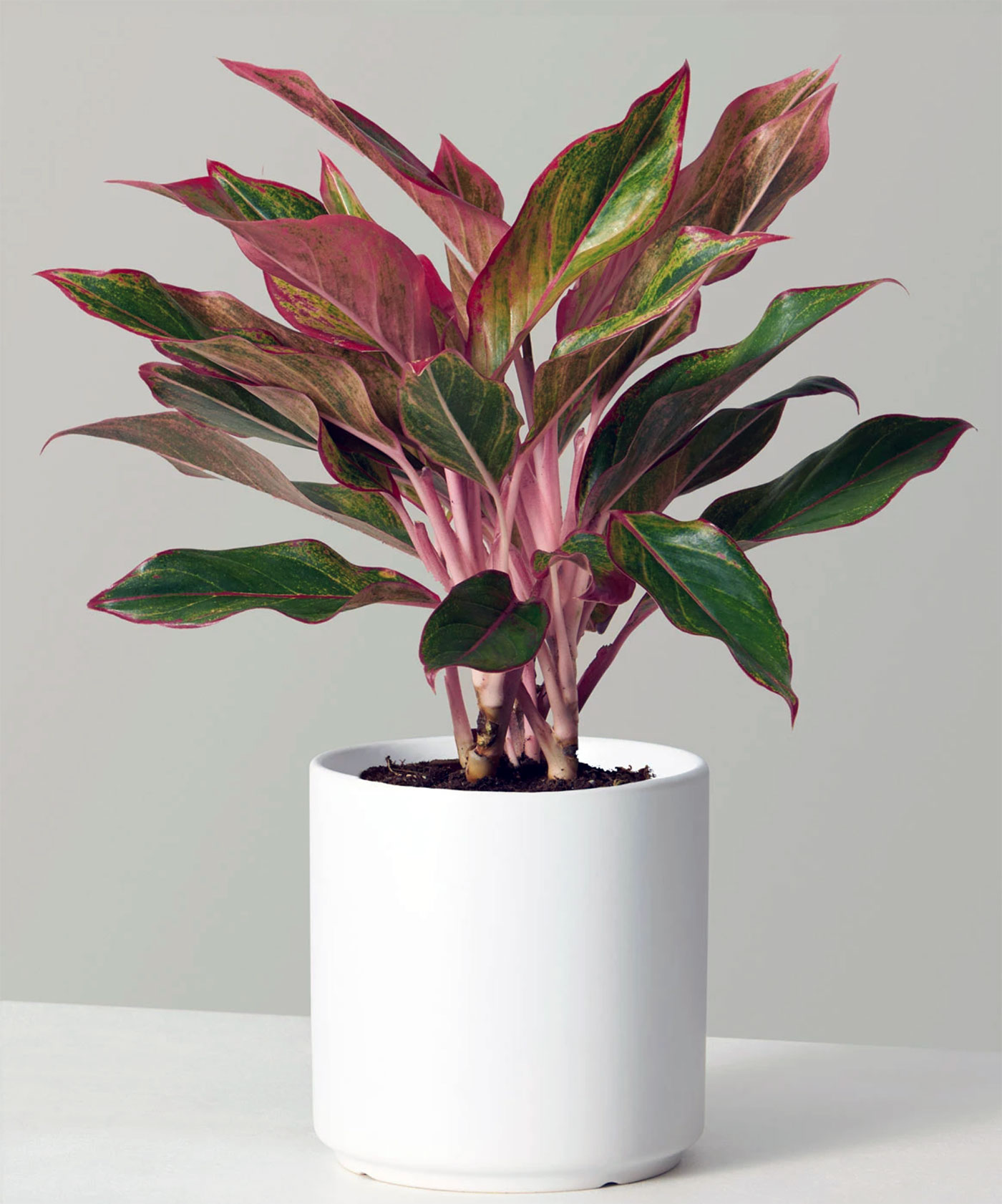
Repotting & Soil mix
Aglaonema grows slowly, so young plants should be repotted every year in spring, while adult ones - every 3-5 years or less. Aglaonema gives good growth of leaves when its roots are limited by the small size of the pot. Do not forget there must be good drainage at the bottom of the pot.
The soil for aglaonema should be light and loose, and water permeable. The soil mixture can be made up of leafy soil, peat and sand (2:1:1) with the addition of crushed charcoal. You can also make the following composition: 1 part of peat, 1 part of leafy soil, 1 part of light turf soil and 2 parts of sand. Aglaonema also grows well in hydroponics.
Propagation
Aglaonema propagates by seeds, cuttings and the separation of daughter plants. In fact, aglaonema is difficult to propagate as it grows slowly.
The easiest way is to divide the bush during repotting, separating well-rooted shoots with 3-4 new leaves.
Cuttings can be removed when the stem has branched out or when the plant is old and a prominent trunk appears. The top of the trunk can be cut as an apical stalk, the rest of the trunk can also be cut into pieces 4-5 cm long and planted. Do not throw away the stump either, new leaves will soon grow from it. In a warm place, rooting takes 2-3 weeks. Aglaonema should be cut during the warm season.
Sowing aglaonema seeds is an activity for the enthusiast. Seeds should be sown in February or March in bowls with light, loose soil, sprayed with warm water from a spray bottle and covered with glass. The soil with crops is kept moist and ventilated 2 times a day by removing the glass. The grown seedlings are planted one at a time in 7 cm pots. Water them moderately, shade slightly from direct sunlight. In summer, young plants are best kept in the northeast or northwest windows.
Toxicity
Besides all the aglaonema care tips, it is essential to keep in mind that the plant is toxic to cats and can be dangerous for people. To ensure safety, wear gloves when handling aglaonema. If your pets show signs of poisoning, weakness, disorientation or diarrhea, contact your veterinarian immediately.
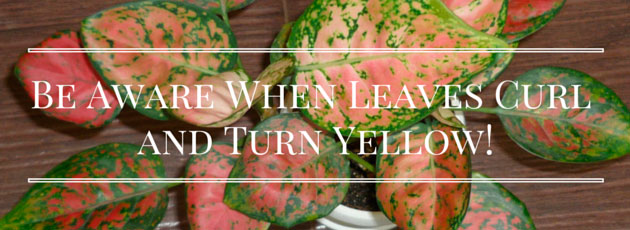
Be Aware When Leaves Curl and Turn Yellow!
Curling leaves are the first signs of negative changes that occur because of viruses that attack the tissues of aglaonema and destroy them. Such viruses are too difficult to get rid of. However, preventive measures can help to reduce the risks for viruses’ occurrence. They include doing tissue culture, cuttings, planting seeds, seedlings and graft separation.
Aglaonema Care: 5 Rules to Know
The following care instructions will be helpful in the process of plant cultivation:
- Proper care for aglaonema starts with its proper placement. Your task is to find the area that receives less indirect light.
- Place your plant far from doors, air vents and windows in order to ensure it won’t suffer from drafts.
- Fertilize the species at least 2 times per month. Water them from spring until autumn with an appropriate solution (1 tsp. soluble 20-20-20 analysis fertilizer and 1 gallon of water).
- Water the plant when the top 2 inches of the soil start getting dry.
- One of the basic care instructions includes wiping the leaves with a moistened cloth to remove dust and dirt.
Diseases and Pests Aglaonema Plant Can Suffer From
The most common aglaonema pests are root mealybugs, aphids, scales and mites. As a rule the plant can suffer from them during propagation stages. When they are left untreated, the plant will die.
The most serious aglaonema diseases include:
- Fusarium stem rot: this is a soft mushy rot at the base of the rotted plant or a cutting. The possible way out is to remove the plants that have been infected.
- Pythium: this disease is referred to as one of the commonest root problems, and occurs under wet conditions or in poorly drained soils.
- Myrothecium and Colletotrichum: these are diseases that lead to leaf spots during propagation.
How to care for your plants? Do everything possible to avoid the occurrence of pests and diseases during growing and propagation stages. If they survive through these periods, they are going to be healthy and appealing.
✔ We Released The Aglaonema HandBook
CLICK HERE TO LEARN MORE >>
Chinese evergreen (Aglaonema) got its name from the combination of two Greek words. One of them is “aglaos” which means “bright” and the other one is“néma” which can be...
There are species that suit perfectly any place whether it’s a modern living room, dim bedroom or cosy study. Such plants can adorn any interior and that is why they are always...
It is thought that some houseplants can bring luck. No one knows why fortune smiles on us but some people correlate it with the appearance of a particular species in their house...
There is no person who wouldn’t dream about a pretty plant that is easy to care about. Chinese evergreen is a species that will make your dreams come true....
Don’t you think that a plant with dark green foliage elegantly flushed with striking pink or bright red tones will make a stylish accent to your décor? If you pictured that in...
If you have watched a famous movie "Leon" by a legendary Luc Besson you won’t be able to forget the plant, which Leon and Matilda were carrying with them everywhere in the film....
It can grow normally in shadowed premises. Thus, people buy this plant for homes or workplaces. However, it will feel comfortable on a casement sill. In particular, east and...
This piece of flora is not fastidious. It fits beautifully into different premises and cleans the air. Howbeit, heed to its aglaonema...
Outdoor isn't an immaculate site for it. Albeit, some nature lovers move this bushy plant alfresco during warm months. But, permanent inside location is recommended. As it is a...
The Aroideae subfamily has a manifold of ornamental plants. It has around 22 unique species. Such multiplicity allows anyone to opt for the plant they desire. These plantae aren'...
If you grow this evergreen cutie, then ultimately you will have to repot aglaonema it. Mainly, it should be done when the plant...
Dust and dirt enter our dwellings frequently. Pollution from cars and factories creates the air that is far from pure. You can vacuum, wash the floor and open casements every day...
It can be outlined as a natural originator of pure air with elegant blooms. As a perennial evergreen of the Plantae kingdom it can grow in hardly ventilated or low light places....
As a rule, Araceae plants are houseplants. Their stalks sense the amenity of the room temperature. You’ll notice it by the allure of petals and blooms. Albeit, it’s possible to...
People recognize this plant as a Chinese Evergreen Aglaonema Modestum. It grows around 30 cm to 60 cm high and 35 cm to 65 cm wide....
Alismatales of this kind has very good-looking plants. Its diversity has twenty two extraordinary species to pick from. All of them are non-identical in shades and ornaments of...
Almost all Aroideae species have flowers during summer. Few of them are blooming in spring or at the beginning of autumn. The flowering demonstrates that the plantae is mature,...
Araceae varieties can be floppy or very tall and without much foliage. This poser can be easily solved with pruning. Don’t be puzzled where and what to cut off. Simply continue...
Have you noticed dingy blurs on your Chinese evergreen? Stop worrying and start acting. You can rescue your plant’s vitality and beauty.
...
Aglaonema Maria is one of the varieties of the Chinese Evergreen. Known as Emerald Beauty, this plant was collected in the...
When it comes to revision of the genus Aglaonema, this plant is a genus of about forty species of hardy green plants in the family...
These days, Thailand Aglaonema plants areamong the most popular foliage house plants. Breeders of these green house plants are very...
Easy to grow Chinese Evergreen is really popular hardy house plant. As there are many species of this foliage plant, there is always a great scope to choose from.
The manifold of the Chinese evergreens is impressive. "Black Lance" is one of them. It’s a flowering plant from Aroideae subfamily.
...
The new cultivar of Aglaonema known as “White Rain”appears to be a good grower. White Rain is a new product of the breeding program...
Noticed brown tips on the Chinese Evergreen? No doubt – the plant can be affected by different species of bacteria. Although this foliage plant is susceptible to bacterial...
Aglaonema Emerald Holiday – known as Chinese Evergreen – is one of the most widely used interior foliage plants. This new...
If you are looking for a unique plant with a striking variegation, Aglaonema Ruby Sunset is the best solution. One of the first...
Chinese Evergreen - the essential appeal of gardens – is acommon name that is often used for a collection of Aglaonema genus plants. This amazing group of plants is very popular...
Aglaonema snake has lots of names. It is often called mother-in-law's tongue. The following plant has to be loved – and for a good...
Aglaonema Romano is a slow grower. Known as one of the most widely used foliage plants, this amazing Chinese Evergreen first develops a root system, then sucker very...
Want to purchase easy-to-care-for plant? Aglaonema is the best solution. It is known for its good longevity and dense appearance. The plant can be maintained at the lower light...
Nowadays, you can buy various Aglaonema seedling plant products from Global Plant suppliers. These young hardy plants can easily...
Chinese evergreen – that was first cultivated in China – is one of the most popular decorative indoor plants used for home and office decor. You can choose different species of...
The Chinese Evergreen – hardy plants – have become one of the most popular and recognizable group of plants for indoor use. With many new varieties of this appealing green plant...
These days Chinese Evergreen plants are extremely popular and can be used as single specimens to decorate home or in mass to create a coarse-textured, tropical effect. What’s...
I have never been interested much in exotic house plants until my friend Anne presented me a nice plant with green spotted leaves. I cannot even call them spots, better to say...









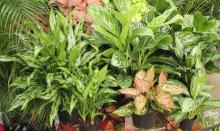 ,
, 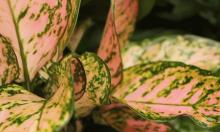 ,
, 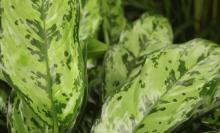 ,
, 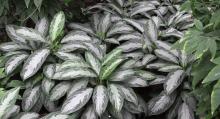 ,
, 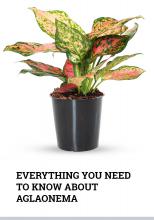 ,
,  ,
, 